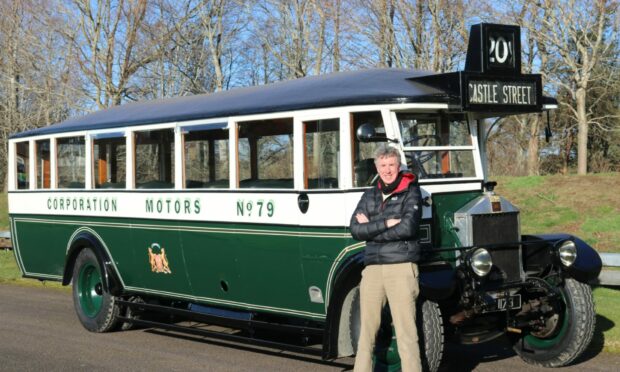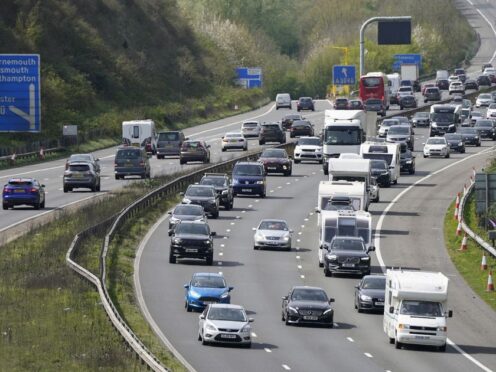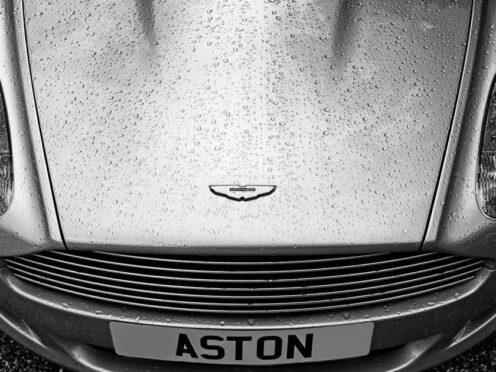Riding the yellow Northern omnibuses was a seminal time in my life.
It transported me, literally, as the kids’ say, from a primary school duffer to the best days of my life, as the grandparents say.
I learnt so much on that 52-minute journey to Inverurie Academy: the 4th year supermodels were quicker witted than the knife carrying wags on the back seats, doing homework on the bus was a bad idea, and that the four-person piece of graffiti monogramed steel and leather front bench was the best seat in the house.
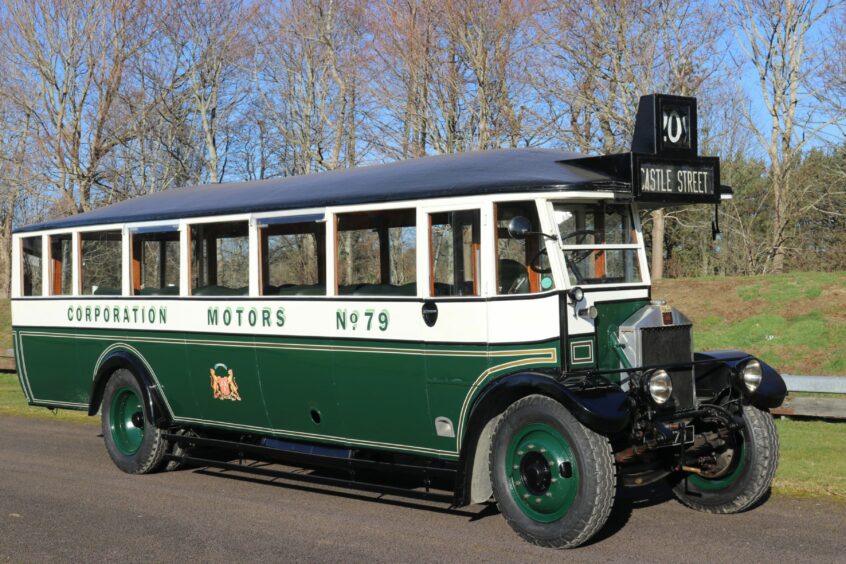
We were a community on that top deck, five days week, and I was part of it. OK, on occasions the old Leyland got steaming and broke down, but those vehicles had soul.
I loved the way they lumbered through the countryside, labouring up Tyrebagger hill (Gaelic for the land of the fox, not an automotive term), then hurtling down the other side. Intrigued by the low-tech that made the thing move I often peered into the cab and wished I could be Cliff.
So, you can imagine my excitement when Joe Mackie, chair of the FirstGroup Heritage Trust, laid down a challenge. Joe reckoned I’d not be able to drive their 1930 Albion bus with the “crash” gearbox and no power steering. Was he right? Read on.

The Albion was first registered as RG 1173 in May 1930 to the Aberdeen Corporation Trust and is considered the end of an era having a 4.5 litre petrol engine.
Delivered new with no electric start (Aberdonians baulking at paying the £80 for the optional extra!). In service it took over from the trams on the Aberdeen city Ferryhill route.
Then, in 1939, taken out of service due to being requisitioned, along with fifteen others, to support the war effort in London. After its war service with the Ministry of Work and Buildings the Albion was offered back to Aberdeen but, of course, the cash alternative for a new bus was taken instead.
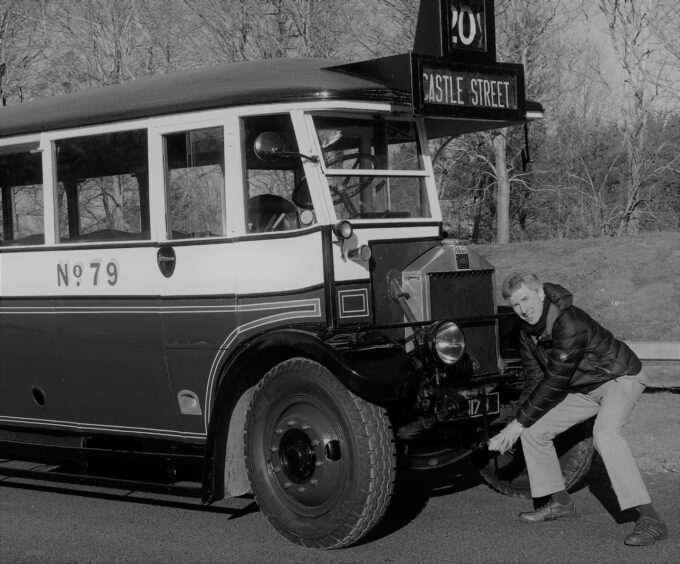
This meant the Albion remained in London, becoming a not so mobile home in Streatham. Fast forward to 1988 when my heroes, led by Gordon Mills and Grampian Transport, secured the Albion for preservation.
They had to extract RG 1173 from the wood that had grown up around (and through) the bus and with only inches of clearance either side to a block of flats built since the bus had been parked up.
Once back in King Street in Aberdeen, N0.37 was fully restored in time for the 95th Anniversary of Public Transport in Aberdeen during 1993. The engine was rebuilt in 2017, a task that required parts being sourced from donor buses around the UK, and a lot of engineering know-how from Gordon.
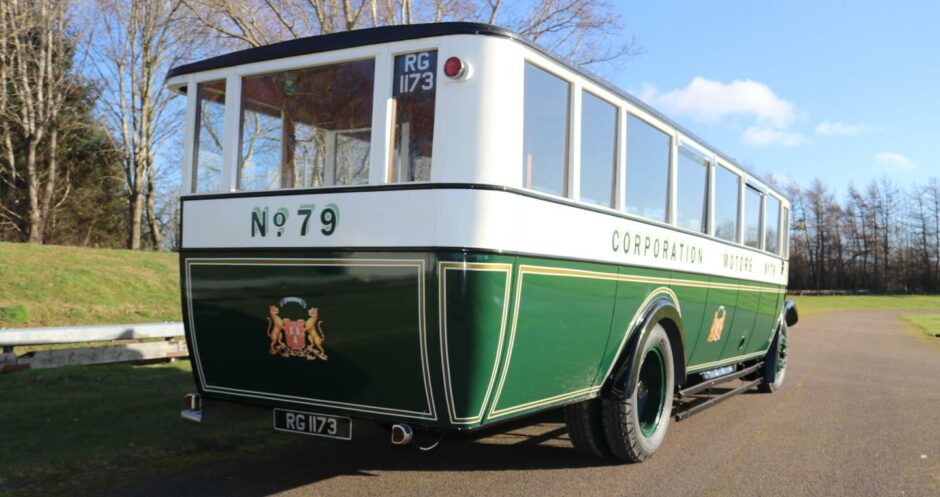
At that time Joe requested an electric starter be fitted. Of course, the purists weren’t sure, although they’re not saying anything now. The new engine is so tight I defy anyone to be able to move the starting handle!
The passenger area is a perfect tribute to Scottish craftsmanship from an Art Deco inspired era; exotic materials, with decadent, polished, high-shine finishes. The ceiling featuring ash wood from Fyvie Castle Estate is outstanding.
But I didn’t even look into the rear. I made straight for the driver’s cab and climbed into that perfect isolation. While admiring the wood and brass, which is more ocean liner the corporation bus, Joe shouts that the middle pedal is the accelerator, and gears (4 forward) are on the right.

Time to get this museum on wheels moving. Now, the trick with the crunch gearbox is dipping the clutch out of gear, then dipping again to get into gear while using your revs to feel your way into the gear ratio.
Usually accompanied by a crunching metallic noise. I found using the industrial gauge wrought iron gear-lever no problem, and when driving naturally it all sort of hooked up.
Then I realised how huge the beast is on the move, how I couldn’t see anything in the tiny mirrors and how incredibly heavy the Albion is to steer. To be fair, I’m no spinach enhanced Popeye, but driving this public transport machine through the city’s streets in the roaring 30s would have required a physical strength well beyond mine.
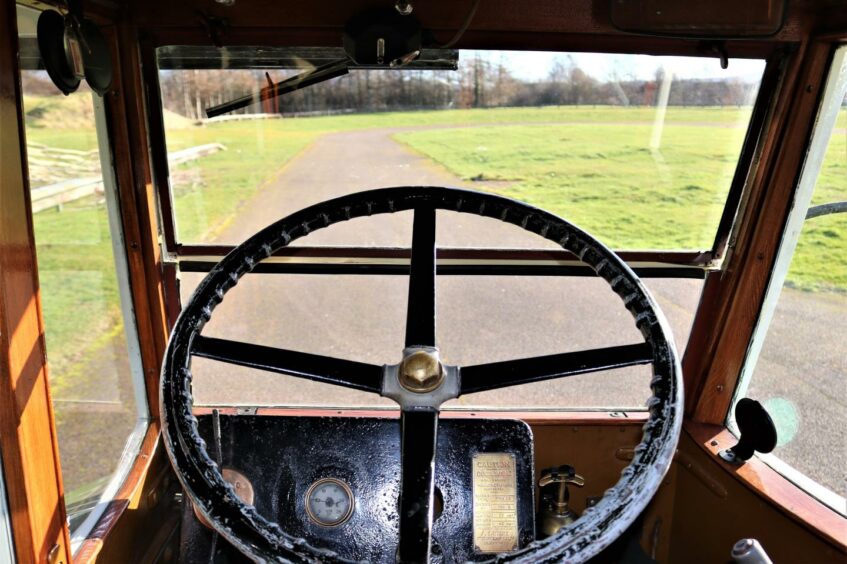
It was when struggling with the heavy steering wheel, and keeping on the road, that I started to over think the gear changes … and it all went wrong. Driving, for me, was made more difficult as I’m about a foot taller than the drivers back in the day, so I had to crouch down to see out.
It was a lonely place out front in my own wooden porch, and pressure was piled on as both Joe and Gordon had boarded as my driving test passengers. I was told, rather hurtfully, that I needed a few more weeks before taking my test.
I did get the last laugh, though. To park up back at the Collection Centre at Grampian Transport Museum, I decided to show off my reversing skill. You should have seen their faces go pale as I backed up through their parked cars.
The Albion is available for hire and use at events, and you can ride in it with a professional driver at Balmoral Castle on June 4th, as part of the Queen’s Platinum Celebrations.
As for buses from our past, the preservation work continues at the Alford, with the bus collection run entirely by volunteers. So, if you’d like to connect with your own bus story, help with preservation or visit the bus collection at Alford, contact Joe and Gordon by e-mail: thebuscollectionatalford@outlook.com
